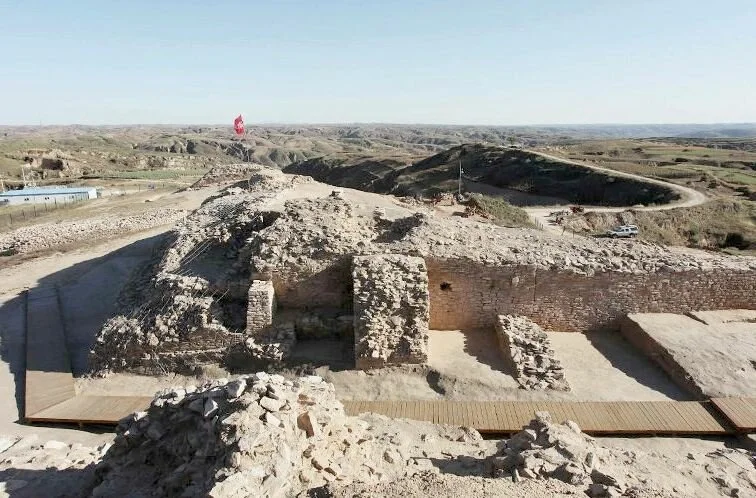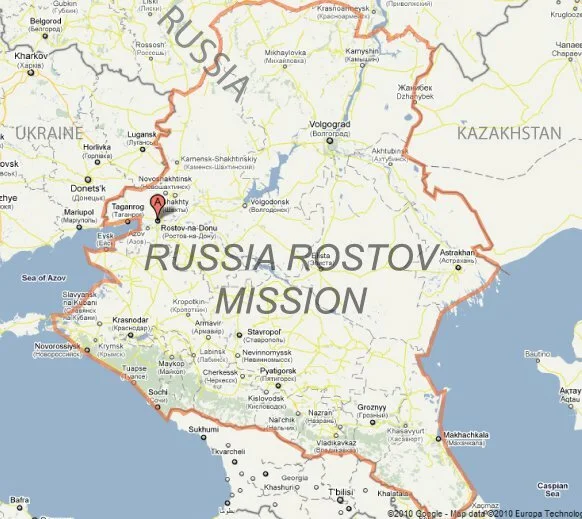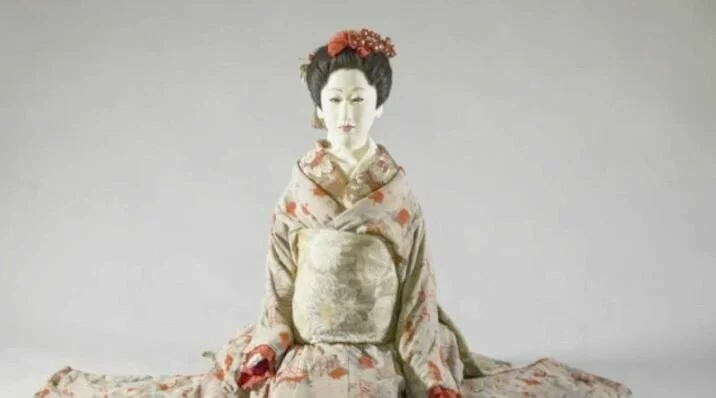 Igor Stomakhin / Strana.ru The Tver Region. Tver. Monument to Afanasy Nikitin
Igor Stomakhin / Strana.ru The Tver Region. Tver. Monument to Afanasy Nikitin
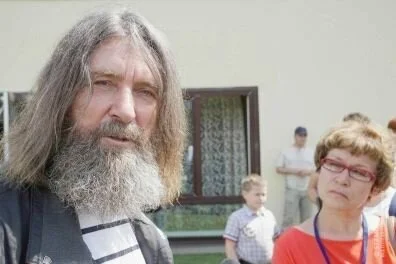
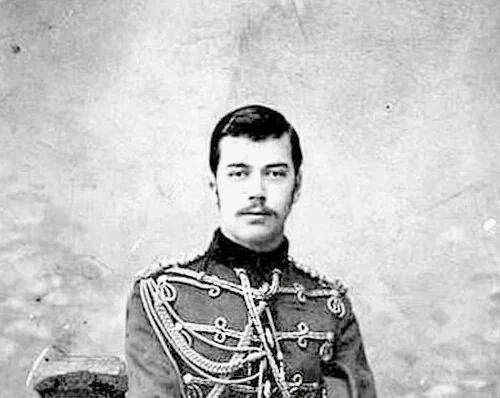
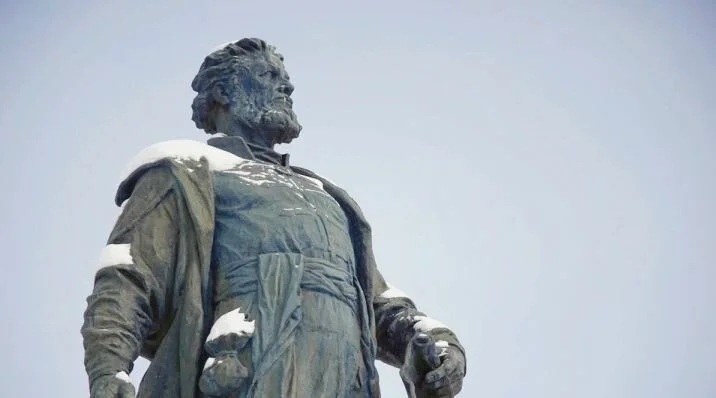
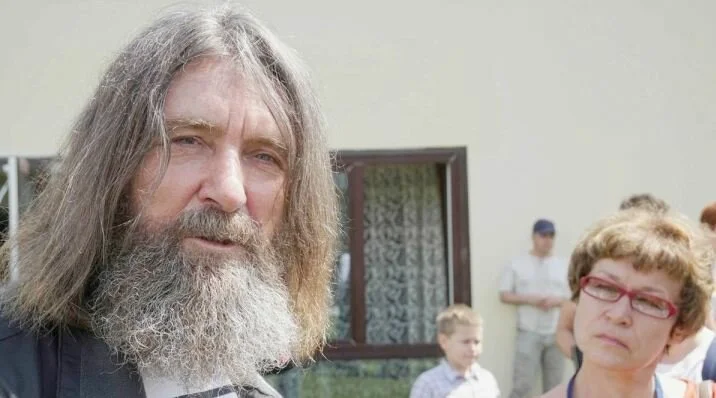
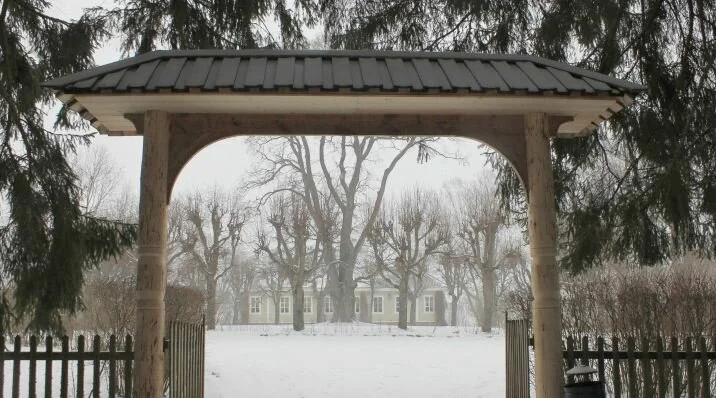

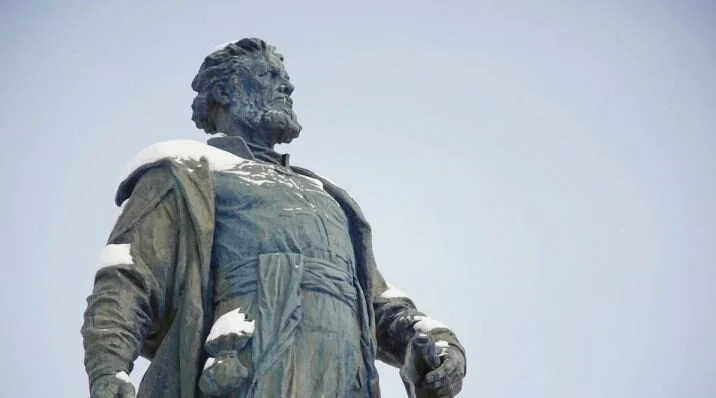
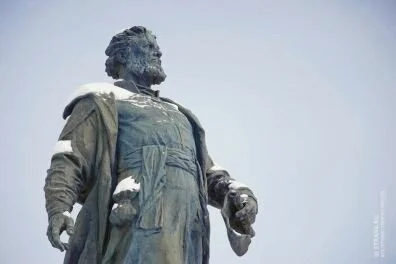
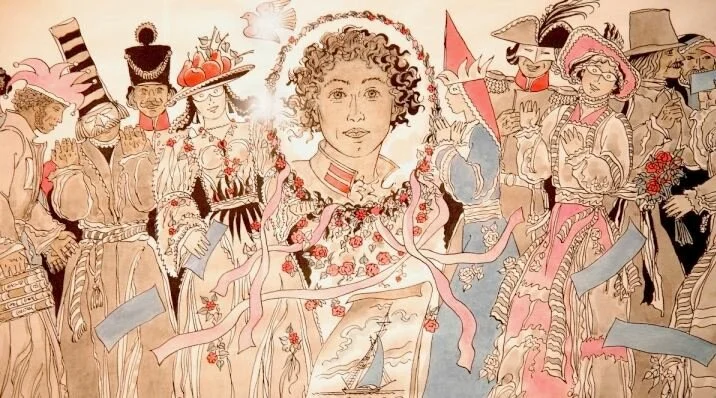
Afanasiy Nikitin
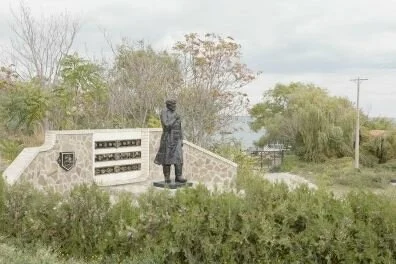
Tver region. Tver. Monument to Athanasius Nikitin. Photo: Igor Stomakhin / Strana.ru
The Tver merchant Afanasy Nikitin is considered, if not the first, then one of the first Europeans to reach India. And not only in this he is the first. Nikitin is the first Russian "commercial traveler" known to us – a business tourist, as they would say today, unlike pilgrims or discoverers who conquered new lands. The first Russian author of the travelogue – "Walking for the Three Seas". Finally, the first Russian, keen on Indian culture, in which he plunged into place.
Afanasy Nikitin is also one of the most mysterious travelers. We know his book, but about him, in fact, we know almost nothing, except the travel routes. When and where he was born, it is not known. It was only a year of death – 1475. "Nikitin" is not even a surname, but a patronymic: the son of a peasant Nikita. The status of the "Tver merchant" is also in question – for a poor merchant Athanasius seems to be too educated a man of broad views and high connections. He traveled on a journey with the blessing of the great Tver prince Mikhail Borisovich, the Tver governor and Tver Bishop Gennady. There is a conspiracy thesis: if Afanasy was a kind of secret agent sent to search for the legendary diamonds of Golconda to replenish the treasury. Allegedly for this reason he continued the way even after his caravan was plundered by robbers, and the satellites withdrew from the distance. However, a more mundane version says that the engine of adventurism was the banal debts and the hope of gaining wealth.
The route of Nikitin is more or less clear. In the spring of 1468, he and his companions on two ships left Tver, heading for the Caspian Sea. This is the first of the "three seas". The Volga reached Nizhny Novgorod, then to Kazan, Saratov, Old and New Saray, sailed to Astrakhan. Under Astrakhan they were attacked by local bandits, who first seized one ship with goods, then another. They released the looted merchants, barring their way back. "And we went, weeping, on two ships to Derbent."
Tver region. Tver. Mosaic of the artist A.I. Golubtsova, dedicated to Athanasius Nikitin. A source:
On the way to Derbent, Nikitin’s companions did not escape the future Makhachkala – the ancient city of Tarki (now it is part of the capital of Dagestan). There, a storm broke one of the ships, and the travelers were again captured. From Derbent, already alone, Nikitin moved to Baku, from there to Iran, to the cities that he lists in his notes: Chapakur, Sari, Amol, Demavend, Ray, Kashan, Nain, Yazd, Sirjan, Tarom, Lar, Ormuz. Of the values he had only a thoroughbred horse, which he hoped to profitably sell in India (profitably did not work). At the same time the son of the peasant Nikita spoke Farsi, Arabic and several Turkic languages, knew astronomy well, and could write well. In addition, he repeatedly emphasizes his firmness in the faith – in Islam Athanasius did not pass, although this would be an easy way out for a traveler in the East. I was very bored on Christian holidays and "books".
After the city, "Ormuz New, on the island lying", the Indian Sea began, the second of three. Ormuz was a large port in the Persian Gulf, from where Nikitin sailed to India – a quarter of a century before the Portuguese Vasco da Gama, officially opened the sea route to it for Europeans. Impressions from India were contradictory: Athanasius found it interesting, but – current tourists will be surprised – ruinously expensive for living.
Republic of Crimea. Theodosius. Monument to Athanasius Nikitin. Source: livejournal.com
Black Sea became the third sea. According to him, Nikitin finally sailed towards his homeland, having reached India via Persia to Turkish Trebizond. The next point was Theodosius. More precisely, the Genoa Kafa. Not everyone knows that this is the second after Afanasy Nikitin city, where there is also a monument to him.
Before his native Tver, and even before the actual Rus, he did not get there, he died en route to the territory of the principality of Lithuania, near Smolensk. The Moscow merchants, who were his companions, did not let Nikitin’s trip notes – brought them to Moscow, and "Khozhdenie" literally got caught in the annals. That reinforces the vivid theory of a complex merchant-agent under cover …
Surprisingly, today in Russia there is no museum Afanasy Nikitin. Although this fact can be understood – too mysterious character, too little is known about him. There are monuments in Feodosia and the echo of Tver monument. Afanasy Nikitin is a symbol of a city that did not forget his countryman even when he was hiding under the party nickname "Kalinin".
Alexander Pushkin
"Our everything", of course, could not fail to become a model for a Russian traveler as well – a little writer (not counting the same Nikitin) wound so many miles along the roads. This time the roads were purely domestic with a short exit to the land of Turkey, in Arzrum. Alexander Sergeevich Pushkin – the only person from his circle – all his life was "not allowed to travel abroad". Most of his travels were made either by a state order or by official need. That did not stop to create a whole body of great road poetry, and now any person who reads in Russian, from childhood, imagines the winter road, the coachman’s songs, the ringing of the bell, the swirling of demons in blizzards, and the eternal longing of the traveler around the house.
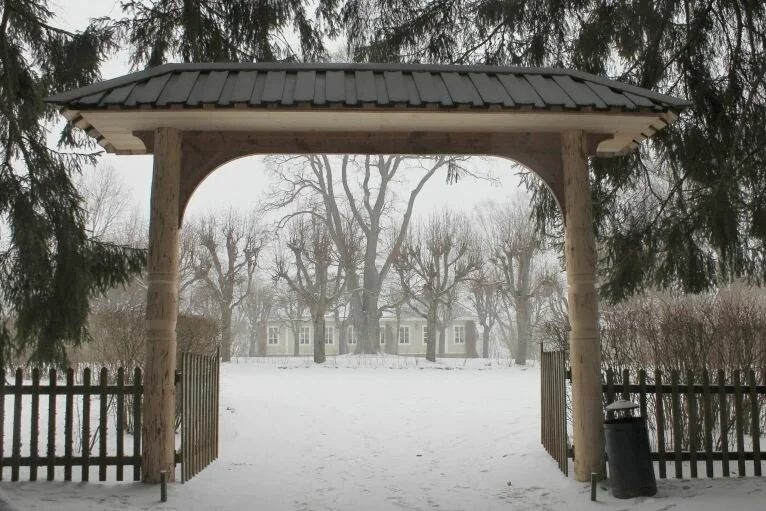 Pskov region. The Mikhailovsky Museum-Reserve. Press service of the museum /
Pskov region. The Mikhailovsky Museum-Reserve. Press service of the museum /
The first journey of Pushkin, except for children’s trips to the grandmother’s estate Zakharovo, was the traditional transfer between the capitals, from Moscow to St. Petersburg, to the Tsarskoe Selo Lyceum. At the end of the Lyceum, the young poet went to the Mikhailovskoye family’s estate, but a serious adult voyage began a little later and not on his own. Pushkin’s "outrageous poems" were sent to the "half-link" to the south – "the floor", because formally it was an appointment for civil service in the Chisinau office, and later in Odessa. This was a mild punishment in comparison with the original intention to send him to the Solovetsky Monastery or to Siberia.
The points of the Pushkin routes of 1820-24 are Petersburg, Ekaterinoslav, Taganrog, Aksai, Novocherkassk, Georgievsk, Konstantinovsk, Pyatigorsk, Zheleznovodsk, Kislovodsk, Taman, Kerch, Feodosia, Gurzuf, Bakhchisaray, Simferopol, Chisinau, Kamenka, Kiev, Tulchin, Ackerman, Odessa, Izmail, Nikolaev, Elisavetgrad, Kremenchuk, Chernigov, Mogilev, Vitebsk … Pushkin was bored, made acquaintances, including with future Decembrists, fell in love, saw authentic traces of antiquity, imagined himself Ovid in exile and joined the Masonic lodge "Ovid" met the dawn at sea board the ship, he rushed to the capital – and, of course, wrote poetry. Internal freedom could not be limited, and new impressions gave food to the mind and imagination. So from the "rusty iron tube" of the broken fountain of the khan’s palace in Bakhchisaray was born the "Bakhchisarai fountain".
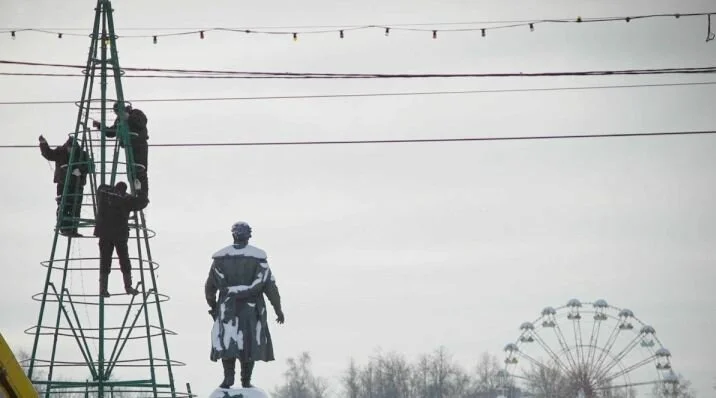 Republic of Crimea. Bakhchisaray. Bakhchsarai Palace Museum. Photo: Eugene Ptushka / Strana.ru
Republic of Crimea. Bakhchisaray. Bakhchsarai Palace Museum. Photo: Eugene Ptushka / Strana.ru
In 1824, the "half-link" was replaced by dismissal from the service and this reference, since the censorship uncovered Pushkin’s letter about "atheistic sentiments". He was sent to Mikhailovskoe under the supervision of his father. For two years Pushkin was confined to the neighborhood of the estate and dreamed of escaping from there by any means. The sharpening (also very fruitful) ended in 1926, when the new emperor Nicholas I summoned Pushkin to Moscow.
The second great journey of Pushkin is an expedition to the Caucasus and Turkey, together with the active army. He went there, for the first time, after wooing Natalia Goncharova and receiving a refusal. From this trip there was one more great "travelogue" – "Journey to Arzrum".
The next wide route in the early 1830s was connected with the collection of materials for the "History of the Pugachev Riot" and "The Captain’s Daughter". The journey through Pugachev’s places led Pushkin to Nizhny Novgorod, Kazan, Simbirsk, Lazykovo, Orenburg and Uralsk (the former Yaitsk town). The immersion in the material was complete: back home, to Boldino, he was leaving the same road that was taking the captive Pugachev.
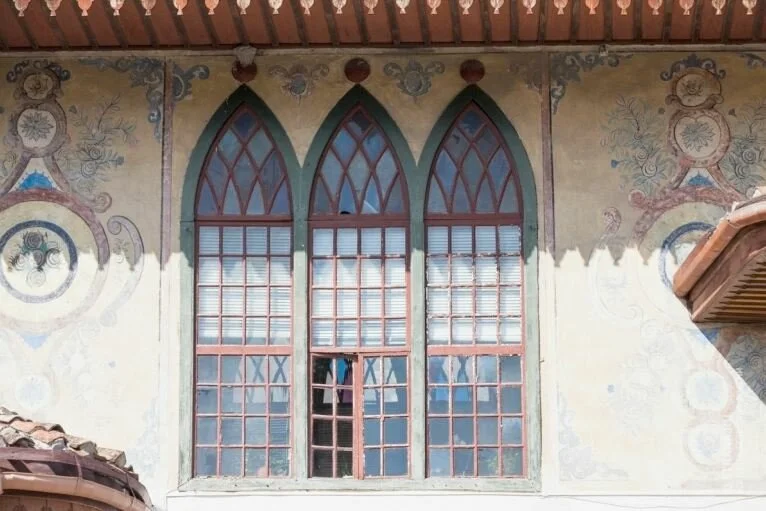 Pskov region. Museum-Reserve A.S. Pushkin’s Mikhailovsky. Photo: Pavel Pelevin / Strana.ru
Pskov region. Museum-Reserve A.S. Pushkin’s Mikhailovsky. Photo: Pavel Pelevin / Strana.ru
Since Pushkin documented his life in letters, they help to compile a "manual" for a Russian tourist of the first half of the 19th century. Firstly, having no own crew, A.S. all his life he traveled by public transport, that is, "on postal". In summer, for the broken Russian roads, the cart was best suited, in the winter – a kibitka, that is, a sleigh with a semicircular covered top. The stagecoach, which was fired between Moscow and Petersburg, Pushkin found experimentally unbearably slow and uncomfortable in organizing the movement. Naturally, he had to get injured on the way, when coachmen "overturned" him, and lay down at the postal station. A significant problem was the food of the traveler: often there was simply no food, and the owners were persuaded by the "fast day", or it was of terrible quality – with cockroaches, etc. Therefore, good institutions were awarded poetry recommendations, which we still remember – for example, about "Galiani or Kolioni" with their cutlets in Tver.
A vivid description of the road burdens is a half-joking response to his wife in October 1832, when she was jealous of A.S. because of the delay in the letter: "A Russian man on the road does not change clothes and, having reached the pig’s place, goes to the bathhouse, which is our second mother. Are you not baptized, that you do not know all this? "
The best and most atmospheric museum of Pushkin’s traveler is the Museum of his hero, that is, the Station-master in Võre. There you can see and pre-empt all the realities of the old Russian road – and transport, and stops on the way, and the living conditions of the passenger or coachman.
Yakov Sannikov
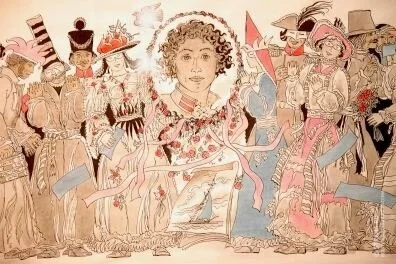 Shot from the film "The Land of Sannikov." Directed by Albert Mkrtchan, Leonid Popov. Mosfilm Studios, 1973
Shot from the film "The Land of Sannikov." Directed by Albert Mkrtchan, Leonid Popov. Mosfilm Studios, 1973
The merchant Sannikov may not have been a particularly outstanding traveler in terms of wanderings. But he gave us an exciting geographical legend, and with it – a song for all time that everything in this world is ghostly. The fate of Sannikov and his discovery, in general, confirms this.
About the merchant Sannikov, we again know a little. He was born in 1780 in Ust-Yanske (Yakutia), was engaged in the extraction of furs and mammoth bones, which was abundant in permafrost, and they were valued at least as much as Arctic fox. Apparently, he was attracted to solitary travels in the Far North, and he overcame the polar expanses even in winter alone. Sannikov was the first to reach the Stolbovoi Islands, Faddeevsky and Novaya Sibir and returned safely, having obtained from the government the preemptive right to collect mammoth bones on these islands.
In 1809 he became the foreman of the artel of industrialists, that is hunters, as part of the expedition of Matvey Gedenstrom, who explored the Novosibirsk Islands. In March of the same year, industrialists on dog sleds crossed the island of New Siberia from the south to the north, and there, from the northern shore, Sannikov discerned in the distance to the northeast a kind of condensation of blue. The "blue" for him was what foreshadowed the discovery of a new land among the polar sea. However, when the members of the expedition moved towards the "blue", there were found only ice mountains, usual for the polar sea.
But Sannikov was sure that in the north lies the undiscovered land. In the autumn of 1810, he found on the north-western shore of Kotelny Island, he again saw far away in the north, not just the blue, but the stone mountains. The head of the expedition had no reason to doubt the sight and instincts of Sannikov, and the alleged island was designated on the map as "the land seen by Sannikov". The third time Sannikov saw his "land" in the north another year later, when he was with his son on the island of Faddeevsky. The location of the ghost island was shifting, as if there were several or one of the islands moving around.
 Igor Stomakhin / Strana.ru The Tver Region. Tver. Monument to Afanasy Nikitin
Igor Stomakhin / Strana.ru The Tver Region. Tver. Monument to Afanasy Nikitin









Afanasiy Nikitin
 Tver region. Tver. Monument to Athanasius Nikitin. Photo: Igor Stomakhin / Strana.ru
Tver region. Tver. Monument to Athanasius Nikitin. Photo: Igor Stomakhin / Strana.ru
The Tver merchant Afanasy Nikitin is considered, if not the first, then one of the first Europeans to reach India. And not only in this he is the first. Nikitin is the first Russian "commercial traveler" known to us – a business tourist, as they would say today, unlike pilgrims or discoverers who conquered new lands. The first Russian author of the travelogue – "Walking for the Three Seas". Finally, the first Russian, keen on Indian culture, in which he plunged into place.
Afanasy Nikitin is also one of the most mysterious travelers. We know his book, but about him, in fact, we know almost nothing, except the travel routes. When and where he was born, it is not known. It was only a year of death – 1475. "Nikitin" is not even a surname, but a patronymic: the son of a peasant Nikita. The status of the "Tver merchant" is also in question – for a poor merchant Athanasius seems to be too educated a man of broad views and high connections. He traveled on a journey with the blessing of the great Tver prince Mikhail Borisovich, the Tver governor and Tver Bishop Gennady. There is a conspiracy thesis: if Afanasy was a kind of secret agent sent to search for the legendary diamonds of Golconda to replenish the treasury. Allegedly for this reason he continued the way even after his caravan was plundered by robbers, and the satellites withdrew from the distance. However, a more mundane version says that the engine of adventurism was the banal debts and the hope of gaining wealth.
The route of Nikitin is more or less clear. In the spring of 1468, he and his companions on two ships left Tver, heading for the Caspian Sea. This is the first of the "three seas". The Volga reached Nizhny Novgorod, then to Kazan, Saratov, Old and New Saray, sailed to Astrakhan. Under Astrakhan they were attacked by local bandits, who first seized one ship with goods, then another. They released the looted merchants, barring their way back. "And we went, weeping, on two ships to Derbent."
Tver region. Tver. Mosaic of the artist A.I. Golubtsova, dedicated to Athanasius Nikitin. A source:
On the way to Derbent, Nikitin’s companions did not escape the future Makhachkala – the ancient city of Tarki (now it is part of the capital of Dagestan). There, a storm broke one of the ships, and the travelers were again captured. From Derbent, already alone, Nikitin moved to Baku, from there to Iran, to the cities that he lists in his notes: Chapakur, Sari, Amol, Demavend, Ray, Kashan, Nain, Yazd, Sirjan, Tarom, Lar, Ormuz. Of the values he had only a thoroughbred horse, which he hoped to profitably sell in India (profitably did not work). At the same time the son of the peasant Nikita spoke Farsi, Arabic and several Turkic languages, knew astronomy well, and could write well. In addition, he repeatedly emphasizes his firmness in the faith – in Islam Athanasius did not pass, although this would be an easy way out for a traveler in the East. I was very bored on Christian holidays and "books".
After the city, "Ormuz New, on the island lying", the Indian Sea began, the second of three. Ormuz was a large port in the Persian Gulf, from where Nikitin sailed to India – a quarter of a century before the Portuguese Vasco da Gama, officially opened the sea route to it for Europeans. Impressions from India were contradictory: Athanasius found it interesting, but – current tourists will be surprised – ruinously expensive for living.
Republic of Crimea. Theodosius. Monument to Athanasius Nikitin. Source: livejournal.com
Black Sea became the third sea. According to him, Nikitin finally sailed towards his homeland, having reached India via Persia to Turkish Trebizond. The next point was Theodosius. More precisely, the Genoa Kafa. Not everyone knows that this is the second after Afanasy Nikitin city, where there is also a monument to him.
Before his native Tver, and even before the actual Rus, he did not get there, he died en route to the territory of the principality of Lithuania, near Smolensk. The Moscow merchants, who were his companions, did not let Nikitin’s trip notes – brought them to Moscow, and "Khozhdenie" literally got caught in the annals. That reinforces the vivid theory of a complex merchant-agent under cover …
Surprisingly, today in Russia there is no museum Afanasy Nikitin. Although this fact can be understood – too mysterious character, too little is known about him. There are monuments in Feodosia and the echo of Tver monument. Afanasy Nikitin is a symbol of a city that did not forget his countryman even when he was hiding under the party nickname "Kalinin".
Alexander Pushkin
"Our everything", of course, could not fail to become a model for a Russian traveler as well – a little writer (not counting the same Nikitin) wound so many miles along the roads. This time the roads were purely domestic with a short exit to the land of Turkey, in Arzrum. Alexander Sergeevich Pushkin – the only person from his circle – all his life was "not allowed to travel abroad". Most of his travels were made either by a state order or by official need. That did not stop to create a whole body of great road poetry, and now any person who reads in Russian, from childhood, imagines the winter road, the coachman’s songs, the ringing of the bell, the swirling of demons in blizzards, and the eternal longing of the traveler around the house.
 Pskov region. The Mikhailovsky Museum-Reserve. Press service of the museum /
Pskov region. The Mikhailovsky Museum-Reserve. Press service of the museum /
The first journey of Pushkin, except for children’s trips to the grandmother’s estate Zakharovo, was the traditional transfer between the capitals, from Moscow to St. Petersburg, to the Tsarskoe Selo Lyceum. At the end of the Lyceum, the young poet went to the Mikhailovskoye family’s estate, but a serious adult voyage began a little later and not on his own. Pushkin’s "outrageous poems" were sent to the "half-link" to the south – "the floor", because formally it was an appointment for civil service in the Chisinau office, and later in Odessa. This was a mild punishment in comparison with the original intention to send him to the Solovetsky Monastery or to Siberia.
The points of the Pushkin routes of 1820-24 are Petersburg, Ekaterinoslav, Taganrog, Aksai, Novocherkassk, Georgievsk, Konstantinovsk, Pyatigorsk, Zheleznovodsk, Kislovodsk, Taman, Kerch, Feodosia, Gurzuf, Bakhchisaray, Simferopol, Chisinau, Kamenka, Kiev, Tulchin, Ackerman, Odessa, Izmail, Nikolaev, Elisavetgrad, Kremenchuk, Chernigov, Mogilev, Vitebsk … Pushkin was bored, made acquaintances, including with future Decembrists, fell in love, saw authentic traces of antiquity, imagined himself Ovid in exile and joined the Masonic lodge "Ovid" met the dawn at sea board the ship, he rushed to the capital – and, of course, wrote poetry. Internal freedom could not be limited, and new impressions gave food to the mind and imagination. So from the "rusty iron tube" of the broken fountain of the khan’s palace in Bakhchisaray was born the "Bakhchisarai fountain".
 Republic of Crimea. Bakhchisaray. Bakhchsarai Palace Museum. Photo: Eugene Ptushka / Strana.ru
Republic of Crimea. Bakhchisaray. Bakhchsarai Palace Museum. Photo: Eugene Ptushka / Strana.ru
In 1824, the "half-link" was replaced by dismissal from the service and this reference, since the censorship uncovered Pushkin’s letter about "atheistic sentiments". He was sent to Mikhailovskoe under the supervision of his father. For two years Pushkin was confined to the neighborhood of the estate and dreamed of escaping from there by any means. The sharpening (also very fruitful) ended in 1926, when the new emperor Nicholas I summoned Pushkin to Moscow.
The second great journey of Pushkin is an expedition to the Caucasus and Turkey, together with the active army. He went there, for the first time, after wooing Natalia Goncharova and receiving a refusal. From this trip there was one more great "travelogue" – "Journey to Arzrum".
The next wide route in the early 1830s was connected with the collection of materials for the "History of the Pugachev Riot" and "The Captain’s Daughter". The journey through Pugachev’s places led Pushkin to Nizhny Novgorod, Kazan, Simbirsk, Lazykovo, Orenburg and Uralsk (the former Yaitsk town). The immersion in the material was complete: back home, to Boldino, he was leaving the same road that was taking the captive Pugachev.

Pskov region. Museum-Reserve A.S. Pushkin’s Mikhailovsky. Photo: Pavel Pelevin / Strana.ru
Since Pushkin documented his life in letters, they help to compile a "manual" for a Russian tourist of the first half of the 19th century. Firstly, having no own crew, A.S. all his life he traveled by public transport, that is, "on postal". In summer, for the broken Russian roads, the cart was best suited, in the winter – a kibitka, that is, a sleigh with a semicircular covered top. The stagecoach, which was fired between Moscow and Petersburg, Pushkin found experimentally unbearably slow and uncomfortable in organizing the movement. Naturally, he had to get injured on the way, when coachmen "overturned" him, and lay down at the postal station. A significant problem was the food of the traveler: often there was simply no food, and the owners were persuaded by the "fast day", or it was of terrible quality – with cockroaches, etc. Therefore, good institutions were awarded poetry recommendations, which we still remember – for example, about "Galiani or Kolioni" with their cutlets in Tver.
A vivid description of the road burdens is a half-joking response to his wife in October 1832, when she was jealous of A.S. because of the delay in the letter: "A Russian man on the road does not change clothes and, having reached the pig’s place, goes to the bathhouse, which is our second mother. Are you not baptized, that you do not know all this? "
The best and most atmospheric museum of Pushkin’s traveler is the Museum of his hero, that is, the Station-master in Võre. There you can see and pre-empt all the realities of the old Russian road – and transport, and stops on the way, and the living conditions of the passenger or coachman.
Yakov Sannikov
 Shot from the film "The Land of Sannikov." Directed by Albert Mkrtchan, Leonid Popov. Mosfilm Studios, 1973
Shot from the film "The Land of Sannikov." Directed by Albert Mkrtchan, Leonid Popov. Mosfilm Studios, 1973
The merchant Sannikov may not have been a particularly outstanding traveler in terms of wanderings. But he gave us an exciting geographical legend, and with it – a song for all time that everything in this world is ghostly. The fate of Sannikov and his discovery, in general, confirms this.
About the merchant Sannikov, we again know a little. He was born in 1780 in Ust-Yanske (Yakutia), was engaged in the extraction of furs and mammoth bones, which was abundant in permafrost, and they were valued at least as much as Arctic fox. Apparently, he was attracted to solitary travels in the Far North, and he overcame the polar expanses even in winter alone. Sannikov was the first to reach the Stolbovoi Islands, Faddeevsky and Novaya Sibir and returned safely, having obtained from the government the preemptive right to collect mammoth bones on these islands.
In 1809 he became the foreman of the artel of industrialists, that is hunters, as part of the expedition of Matvey Gedenstrom, who explored the Novosibirsk Islands. In March of the same year, industrialists on dog sleds crossed the island of New Siberia from the south to the north, and there, from the northern shore, Sannikov discerned in the distance to the northeast a kind of condensation of blue. The "blue" for him was what foreshadowed the discovery of a new land among the polar sea. However, when the members of the expedition moved towards the "blue", there were found only ice mountains, usual for the polar sea.
But Sannikov was sure that in the north lies the undiscovered land. In the autumn of 1810, he found on the north-western shore of Kotelny Island, he again saw far away in the north, not just the blue, but the stone mountains. The head of the expedition had no reason to doubt the sight and instincts of Sannikov, and the alleged island was designated on the map as "the land seen by Sannikov". The third time Sannikov saw his "land" in the north another year later, when he was with his son on the island of Faddeevsky. The location of the ghost island was shifting, as if there were several or one of the islands moving around.
The search for Sannikov’s land was based on the conviction of the 19th century that the polar seas hide the Arctic continent. The earth was searched for more than a hundred years, and the point in search was set only in 1937, when the Soviet icebreaker Sadko explored the whole area where the earth was being searched, and the Arctic aviation confirmed the sailors’ conclusions – there is no land among the ice. This does not mean that it seemed to Sannikom. Most likely, he really saw, but not stone mountains, and rocks on an island of fossil ice. Such islands move and disappear.

Igor Stomakhin / Strana.ru The Tver Region. Tver. Monument to Afanasy Nikitin









Afanasiy Nikitin
 Tver region. Tver. Monument to Athanasius Nikitin. Photo: Igor Stomakhin / Strana.ru
Tver region. Tver. Monument to Athanasius Nikitin. Photo: Igor Stomakhin / Strana.ru
The Tver merchant Afanasy Nikitin is considered, if not the first, then one of the first Europeans to reach India. And not only in this he is the first. Nikitin is the first Russian "commercial traveler" known to us – a business tourist, as they would say today, unlike pilgrims or discoverers who conquered new lands. The first Russian author of the travelogue – "Walking for the Three Seas". Finally, the first Russian, keen on Indian culture, in which he plunged into place.
Afanasy Nikitin is also one of the most mysterious travelers. We know his book, but about him, in fact, we know almost nothing, except the travel routes. When and where he was born, it is not known. It was only a year of death – 1475. "Nikitin" is not even a surname, but a patronymic: the son of a peasant Nikita. The status of the "Tver merchant" is also in question – for a poor merchant Athanasius seems to be too educated a man of broad views and high connections. He traveled on a journey with the blessing of the great Tver prince Mikhail Borisovich, the Tver governor and Tver Bishop Gennady. There is a conspiracy thesis: if Afanasy was a kind of secret agent sent to search for the legendary diamonds of Golconda to replenish the treasury. Allegedly for this reason he continued the way even after his caravan was plundered by robbers, and the satellites withdrew from the distance. However, a more mundane version says that the engine of adventurism was the banal debts and the hope of gaining wealth.
The route of Nikitin is more or less clear. In the spring of 1468, he and his companions on two ships left Tver, heading for the Caspian Sea. This is the first of the "three seas". The Volga reached Nizhny Novgorod, then to Kazan, Saratov, Old and New Saray, sailed to Astrakhan. Under Astrakhan they were attacked by local bandits, who first seized one ship with goods, then another. They released the looted merchants, barring their way back. "And we went, weeping, on two ships to Derbent."
Tver region. Tver. Mosaic of the artist A.I. Golubtsova, dedicated to Athanasius Nikitin. A source:
On the way to Derbent, Nikitin’s companions did not escape the future Makhachkala – the ancient city of Tarki (now it is part of the capital of Dagestan). There, a storm broke one of the ships, and the travelers were again captured. From Derbent, already alone, Nikitin moved to Baku, from there to Iran, to the cities that he lists in his notes: Chapakur, Sari, Amol, Demavend, Ray, Kashan, Nain, Yazd, Sirjan, Tarom, Lar, Ormuz. Of the values he had only a thoroughbred horse, which he hoped to profitably sell in India (profitably did not work). At the same time the son of the peasant Nikita spoke Farsi, Arabic and several Turkic languages, knew astronomy well, and could write well. In addition, he repeatedly emphasizes his firmness in the faith – in Islam Athanasius did not pass, although this would be an easy way out for a traveler in the East. I was very bored on Christian holidays and "books".
After the city, "Ormuz New, on the island lying", the Indian Sea began, the second of three. Ormuz was a large port in the Persian Gulf, from where Nikitin sailed to India – a quarter of a century before the Portuguese Vasco da Gama, officially opened the sea route to it for Europeans. Impressions from India were contradictory: Athanasius found it interesting, but – current tourists will be surprised – ruinously expensive for living.
Republic of Crimea. Theodosius. Monument to Athanasius Nikitin. Source: livejournal.com
Black Sea became the third sea. According to him, Nikitin finally sailed towards his homeland, having reached India via Persia to Turkish Trebizond. The next point was Theodosius. More precisely, the Genoa Kafa. Not everyone knows that this is the second after Afanasy Nikitin city, where there is also a monument to him.
Before his native Tver, and even before the actual Rus, he did not get there, he died en route to the territory of the principality of Lithuania, near Smolensk. The Moscow merchants, who were his companions, did not let Nikitin’s trip notes – brought them to Moscow, and "Khozhdenie" literally got caught in the annals. That reinforces the vivid theory of a complex merchant-agent under cover …
Surprisingly, today in Russia there is no museum Afanasy Nikitin. Although this fact can be understood – too mysterious character, too little is known about him. There are monuments in Feodosia and the echo of Tver monument. Afanasy Nikitin is a symbol of a city that did not forget his countryman even when he was hiding under the party nickname "Kalinin".
Alexander Pushkin
"Our everything", of course, could not fail to become a model for a Russian traveler as well – a little writer (not counting the same Nikitin) wound so many miles along the roads. This time the roads were purely domestic with a short exit to the land of Turkey, in Arzrum. Alexander Sergeevich Pushkin – the only person from his circle – all his life was "not allowed to travel abroad". Most of his travels were made either by a state order or by official need. That did not stop to create a whole body of great road poetry, and now any person who reads in Russian, from childhood, imagines the winter road, the coachman’s songs, the ringing of the bell, the swirling of demons in blizzards, and the eternal longing of the traveler around the house.

Pskov region. The Mikhailovsky Museum-Reserve. Press service of the museum /
The first journey of Pushkin, except for children’s trips to the grandmother’s estate Zakharovo, was the traditional transfer between the capitals, from Moscow to St. Petersburg, to the Tsarskoe Selo Lyceum. At the end of the Lyceum, the young poet went to the Mikhailovskoye family’s estate, but a serious adult voyage began a little later and not on his own. Pushkin’s "outrageous poems" were sent to the "half-link" to the south – "the floor", because formally it was an appointment for civil service in the Chisinau office, and later in Odessa. This was a mild punishment in comparison with the original intention to send him to the Solovetsky Monastery or to Siberia.
The points of the Pushkin routes of 1820-24 are Petersburg, Ekaterinoslav, Taganrog, Aksai, Novocherkassk, Georgievsk, Konstantinovsk, Pyatigorsk, Zheleznovodsk, Kislovodsk, Taman, Kerch, Feodosia, Gurzuf, Bakhchisaray, Simferopol, Chisinau, Kamenka, Kiev, Tulchin, Ackerman, Odessa, Izmail, Nikolaev, Elisavetgrad, Kremenchuk, Chernigov, Mogilev, Vitebsk … Pushkin was bored, made acquaintances, including with future Decembrists, fell in love, saw authentic traces of antiquity, imagined himself Ovid in exile and joined the Masonic lodge "Ovid" met the dawn at sea board the ship, he rushed to the capital – and, of course, wrote poetry. Internal freedom could not be limited, and new impressions gave food to the mind and imagination. So from the "rusty iron tube" of the broken fountain of the khan’s palace in Bakhchisaray was born the "Bakhchisarai fountain".
 Republic of Crimea. Bakhchisaray. Bakhchsarai Palace Museum. Photo: Eugene Ptushka / Strana.ru
Republic of Crimea. Bakhchisaray. Bakhchsarai Palace Museum. Photo: Eugene Ptushka / Strana.ru
In 1824, the "half-link" was replaced by dismissal from the service and this reference, since the censorship uncovered Pushkin’s letter about "atheistic sentiments". He was sent to Mikhailovskoe under the supervision of his father. For two years Pushkin was confined to the neighborhood of the estate and dreamed of escaping from there by any means. The sharpening (also very fruitful) ended in 1926, when the new emperor Nicholas I summoned Pushkin to Moscow.
The second great journey of Pushkin is an expedition to the Caucasus and Turkey, together with the active army. He went there, for the first time, after wooing Natalia Goncharova and receiving a refusal. From this trip there was one more great "travelogue" – "Journey to Arzrum".
The next wide route in the early 1830s was connected with the collection of materials for the "History of the Pugachev Riot" and "The Captain’s Daughter". The journey through Pugachev’s places led Pushkin to Nizhny Novgorod, Kazan, Simbirsk, Lazykovo, Orenburg and Uralsk (the former Yaitsk town). The immersion in the material was complete: back home, to Boldino, he was leaving the same road that was taking the captive Pugachev.

Pskov region. Museum-Reserve A.S. Pushkin’s Mikhailovsky. Photo: Pavel Pelevin / Strana.ru
Since Pushkin documented his life in letters, they help to compile a "manual" for a Russian tourist of the first half of the 19th century. Firstly, having no own crew, A.S. all his life he traveled by public transport, that is, "on postal". In summer, for the broken Russian roads, the cart was best suited, in the winter – a kibitka, that is, a sleigh with a semicircular covered top. The stagecoach, which was fired between Moscow and Petersburg, Pushkin found experimentally unbearably slow and uncomfortable in organizing the movement. Naturally, he had to get injured on the way, when coachmen "overturned" him, and lay down at the postal station. A significant problem was the food of the traveler: often there was simply no food, and the owners were persuaded by the "fast day", or it was of terrible quality – with cockroaches, etc. Therefore, good institutions were awarded poetry recommendations, which we still remember – for example, about "Galiani or Kolioni" with their cutlets in Tver.
A vivid description of the road burdens is a half-joking response to his wife in October 1832, when she was jealous of A.S. because of the delay in the letter: "A Russian man on the road does not change clothes and, having reached the pig’s place, goes to the bathhouse, which is our second mother. Are you not baptized, that you do not know all this? "
The best and most atmospheric museum of Pushkin’s traveler is the Museum of his hero, that is, the Station-master in Võre. There you can see and pre-empt all the realities of the old Russian road – and transport, and stops on the way, and the living conditions of the passenger or coachman.
Yakov Sannikov
 Shot from the film "The Land of Sannikov." Directed by Albert Mkrtchan, Leonid Popov. Mosfilm Studios, 1973
Shot from the film "The Land of Sannikov." Directed by Albert Mkrtchan, Leonid Popov. Mosfilm Studios, 1973
The merchant Sannikov may not have been a particularly outstanding traveler in terms of wanderings. But he gave us an exciting geographical legend, and with it – a song for all time that everything in this world is ghostly. The fate of Sannikov and his discovery, in general, confirms this.
About the merchant Sannikov, we again know a little. He was born in 1780 in Ust-Yanske (Yakutia), was engaged in the extraction of furs and mammoth bones, which was abundant in permafrost, and they were valued at least as much as Arctic fox. Apparently, he was attracted to solitary travels in the Far North, and he overcame the polar expanses even in winter alone. Sannikov was the first to reach the Stolbovoi Islands, Faddeevsky and Novaya Sibir and returned safely, having obtained from the government the preemptive right to collect mammoth bones on these islands.
In 1809 he became the foreman of the artel of industrialists, that is hunters, as part of the expedition of Matvey Gedenstrom, who explored the Novosibirsk Islands. In March of the same year, industrialists on dog sleds crossed the island of New Siberia from the south to the north, and there, from the northern shore, Sannikov discerned in the distance to the northeast a kind of condensation of blue. The "blue" for him was what foreshadowed the discovery of a new land among the polar sea. However, when the members of the expedition moved towards the "blue", there were found only ice mountains, usual for the polar sea.
But Sannikov was sure that in the north lies the undiscovered land. In the autumn of 1810, he found on the north-western shore of Kotelny Island, he again saw far away in the north, not just the blue, but the stone mountains. The head of the expedition had no reason to doubt the sight and instincts of Sannikov, and the alleged island was designated on the map as "the land seen by Sannikov". The third time Sannikov saw his "land" in the north another year later, when he was with his son on the island of Faddeevsky. The location of the ghost island was shifting, as if there were several or one of the islands moving around.

Igor Stomakhin / Strana.ru The Tver Region. Tver. Monument to Afanasy Nikitin









Afanasiy Nikitin

Tver region. Tver. Monument to Athanasius Nikitin. Photo: Igor Stomakhin / Strana.ru
The Tver merchant Afanasy Nikitin is considered, if not the first, then one of the first Europeans to reach India. And not only in this he is the first. Nikitin is the first Russian "commercial traveler" known to us – a business tourist, as they would say today, unlike pilgrims or discoverers who conquered new lands. The first Russian author of the travelogue – "Walking for the Three Seas". Finally, the first Russian, keen on Indian culture, in which he plunged into place.
Afanasy Nikitin is also one of the most mysterious travelers. We know his book, but about him, in fact, we know almost nothing, except the travel routes. When and where he was born, it is not known. It was only a year of death – 1475. "Nikitin" is not even a surname, but a patronymic: the son of a peasant Nikita. The status of the "Tver merchant" is also in question – for a poor merchant Athanasius seems to be too educated a man of broad views and high connections. He traveled on a journey with the blessing of the great Tver prince Mikhail Borisovich, the Tver governor and Tver Bishop Gennady. There is a conspiracy thesis: if Afanasy was a kind of secret agent sent to search for the legendary diamonds of Golconda to replenish the treasury. Allegedly for this reason he continued the way even after his caravan was plundered by robbers, and the satellites withdrew from the distance. However, a more mundane version says that the engine of adventurism was the banal debts and the hope of gaining wealth.
The route of Nikitin is more or less clear. In the spring of 1468, he and his companions on two ships left Tver, heading for the Caspian Sea. This is the first of the "three seas". The Volga reached Nizhny Novgorod, then to Kazan, Saratov, Old and New Saray, sailed to Astrakhan. Under Astrakhan they were attacked by local bandits, who first seized one ship with goods, then another. They released the looted merchants, barring their way back. "And we went, weeping, on two ships to Derbent."
Tver region. Tver. Mosaic of the artist A.I. Golubtsova, dedicated to Athanasius Nikitin. A source:
On the way to Derbent, Nikitin’s companions did not escape the future Makhachkala – the ancient city of Tarki (now it is part of the capital of Dagestan). There, a storm broke one of the ships, and the travelers were again captured. From Derbent, already alone, Nikitin moved to Baku, from there to Iran, to the cities that he lists in his notes: Chapakur, Sari, Amol, Demavend, Ray, Kashan, Nain, Yazd, Sirjan, Tarom, Lar, Ormuz. Of the values he had only a thoroughbred horse, which he hoped to profitably sell in India (profitably did not work). At the same time the son of the peasant Nikita spoke Farsi, Arabic and several Turkic languages, knew astronomy well, and could write well. In addition, he repeatedly emphasizes his firmness in the faith – in Islam Athanasius did not pass, although this would be an easy way out for a traveler in the East. I was very bored on Christian holidays and "books".
After the city, "Ormuz New, on the island lying", the Indian Sea began, the second of three. Ormuz was a large port in the Persian Gulf, from where Nikitin sailed to India – a quarter of a century before the Portuguese Vasco da Gama, officially opened the sea route to it for Europeans. Impressions from India were contradictory: Athanasius found it interesting, but – current tourists will be surprised – ruinously expensive for living.
Republic of Crimea. Theodosius. Monument to Athanasius Nikitin. Source: livejournal.com
Black Sea became the third sea. According to him, Nikitin finally sailed towards his homeland, having reached India via Persia to Turkish Trebizond. The next point was Theodosius. More precisely, the Genoa Kafa. Not everyone knows that this is the second after Afanasy Nikitin city, where there is also a monument to him.
Before his native Tver, and even before the actual Rus, he did not get there, he died en route to the territory of the principality of Lithuania, near Smolensk. The Moscow merchants, who were his companions, did not let Nikitin’s trip notes – brought them to Moscow, and "Khozhdenie" literally got caught in the annals. That reinforces the vivid theory of a complex merchant-agent under cover …
Surprisingly, today in Russia there is no museum Afanasy Nikitin. Although this fact can be understood – too mysterious character, too little is known about him. There are monuments in Feodosia and the echo of Tver monument. Afanasy Nikitin is a symbol of a city that did not forget his countryman even when he was hiding under the party nickname "Kalinin".
Alexander Pushkin
"Our everything", of course, could not fail to become a model for a Russian traveler as well – a little writer (not counting the same Nikitin) wound so many miles along the roads. This time the roads were purely domestic with a short exit to the land of Turkey, in Arzrum. Alexander Sergeevich Pushkin – the only person from his circle – all his life was "not allowed to travel abroad". Most of his travels were made either by a state order or by official need. That did not stop to create a whole body of great road poetry, and now any person who reads in Russian, from childhood, imagines the winter road, the coachman’s songs, the ringing of the bell, the swirling of demons in blizzards, and the eternal longing of the traveler around the house.

Pskov region. The Mikhailovsky Museum-Reserve. Press service of the museum /
The first journey of Pushkin, except for children’s trips to the grandmother’s estate Zakharovo, was the traditional transfer between the capitals, from Moscow to St. Petersburg, to the Tsarskoe Selo Lyceum. At the end of the Lyceum, the young poet went to the Mikhailovskoye family’s estate, but a serious adult voyage began a little later and not on his own. Pushkin’s "outrageous poems" were sent to the "half-link" to the south – "the floor", because formally it was an appointment for civil service in the Chisinau office, and later in Odessa. This was a mild punishment in comparison with the original intention to send him to the Solovetsky Monastery or to Siberia.
The points of the Pushkin routes of 1820-24 are Petersburg, Ekaterinoslav, Taganrog, Aksai, Novocherkassk, Georgievsk, Konstantinovsk, Pyatigorsk, Zheleznovodsk, Kislovodsk, Taman, Kerch, Feodosia, Gurzuf, Bakhchisaray, Simferopol, Chisinau, Kamenka, Kiev, Tulchin, Ackerman, Odessa, Izmail, Nikolaev, Elisavetgrad, Kremenchuk, Chernigov, Mogilev, Vitebsk … Pushkin was bored, made acquaintances, including with future Decembrists, fell in love, saw authentic traces of antiquity, imagined himself Ovid in exile and joined the Masonic lodge "Ovid" met the dawn at sea board the ship, he rushed to the capital – and, of course, wrote poetry. Internal freedom could not be limited, and new impressions gave food to the mind and imagination. So from the "rusty iron tube" of the broken fountain of the khan’s palace in Bakhchisaray was born the "Bakhchisarai fountain".
 Republic of Crimea. Bakhchisaray. Bakhchsarai Palace Museum. Photo: Eugene Ptushka / Strana.ru
Republic of Crimea. Bakhchisaray. Bakhchsarai Palace Museum. Photo: Eugene Ptushka / Strana.ru
In 1824, the "half-link" was replaced by dismissal from the service and this reference, since the censorship uncovered Pushkin’s letter about "atheistic sentiments". He was sent to Mikhailovskoe under the supervision of his father. For two years Pushkin was confined to the neighborhood of the estate and dreamed of escaping from there by any means. The sharpening (also very fruitful) ended in 1926, when the new emperor Nicholas I summoned Pushkin to Moscow.
The second great journey of Pushkin is an expedition to the Caucasus and Turkey, together with the active army. He went there, for the first time, after wooing Natalia Goncharova and receiving a refusal. From this trip there was one more great "travelogue" – "Journey to Arzrum".
The next wide route in the early 1830s was connected with the collection of materials for the "History of the Pugachev Riot" and "The Captain’s Daughter". The journey through Pugachev’s places led Pushkin to Nizhny Novgorod, Kazan, Simbirsk, Lazykovo, Orenburg and Uralsk (the former Yaitsk town). The immersion in the material was complete: back home, to Boldino, he was leaving the same road that was taking the captive Pugachev.
 Pskov region. Museum-Reserve A.S. Pushkin’s Mikhailovsky. Photo: Pavel Pelevin / Strana.ru
Pskov region. Museum-Reserve A.S. Pushkin’s Mikhailovsky. Photo: Pavel Pelevin / Strana.ru
Since Pushkin documented his life in letters, they help to compile a "manual" for a Russian tourist of the first half of the 19th century. Firstly, having no own crew, A.S. all his life he traveled by public transport, that is, "on postal". In summer, for the broken Russian roads, the cart was best suited, in the winter – a kibitka, that is, a sleigh with a semicircular covered top. The stagecoach, which was fired between Moscow and Petersburg, Pushkin found experimentally unbearably slow and uncomfortable in organizing the movement. Naturally, he had to get injured on the way, when coachmen "overturned" him, and lay down at the postal station. A significant problem was the food of the traveler: often there was simply no food, and the owners were persuaded by the "fast day", or it was of terrible quality – with cockroaches, etc. Therefore, good institutions were awarded poetry recommendations, which we still remember – for example, about "Galiani or Kolioni" with their cutlets in Tver.
A vivid description of the road burdens is a half-joking response to his wife in October 1832, when she was jealous of A.S. because of the delay in the letter: "A Russian man on the road does not change clothes and, having reached the pig’s place, goes to the bathhouse, which is our second mother. Are you not baptized, that you do not know all this? "
The best and most atmospheric museum of Pushkin’s traveler is the Museum of his hero, that is, the Station-master in Võre. There you can see and pre-empt all the realities of the old Russian road – and transport, and stops on the way, and the living conditions of the passenger or coachman.
Yakov Sannikov

Shot from the film "The Land of Sannikov." Directed by Albert Mkrtchan, Leonid Popov. Mosfilm Studios, 1973
The merchant Sannikov may not have been a particularly outstanding traveler in terms of wanderings. But he gave us an exciting geographical legend, and with it – a song for all time that everything in this world is ghostly. The fate of Sannikov and his discovery, in general, confirms this.
About the merchant Sannikov, we again know a little. He was born in 1780 in Ust-Yanske (Yakutia), was engaged in the extraction of furs and mammoth bones, which was abundant in permafrost, and they were valued at least as much as Arctic fox. Apparently, he was attracted to solitary travels in the Far North, and he overcame the polar expanses even in winter alone. Sannikov was the first to reach the Stolbovoi Islands, Faddeevsky and Novaya Sibir and returned safely, having obtained from the government the preemptive right to collect mammoth bones on these islands.
In 1809 he became the foreman of the artel of industrialists, that is hunters, as part of the expedition of Matvey Gedenstrom, who explored the Novosibirsk Islands. In March of the same year, industrialists on dog sleds crossed the island of New Siberia from the south to the north, and there, from the northern shore, Sannikov discerned in the distance to the northeast a kind of condensation of blue. The "blue" for him was what foreshadowed the discovery of a new land among the polar sea. However, when the members of the expedition moved towards the "blue", there were found only ice mountains, usual for the polar sea.
But Sannikov was sure that in the north lies the undiscovered land. In the autumn of 1810, he found on the north-western shore of Kotelny Island, he again saw far away in the north, not just the blue, but the stone mountains. The head of the expedition had no reason to doubt the sight and instincts of Sannikov, and the alleged island was designated on the map as "the land seen by Sannikov". The third time Sannikov saw his "land" in the north another year later, when he was with his son on the island of Faddeevsky. The location of the ghost island was shifting, as if there were several or one of the islands moving around.
The search for Sannikov’s land was based on the conviction of the 19th century that the polar seas hide the Arctic continent. The earth was searched for more than a hundred years, and the point in search was set only in 1937, when the Soviet icebreaker Sadko explored the whole area where the earth was being searched, and the Arctic aviation confirmed the sailors’ conclusions – there is no land among the ice. This does not mean that it seemed to Sannikom. Most likely, he really saw, but not stone mountains, and rocks on an island of fossil ice. Such islands move and disappear.
The research of the Sadko icebreaker was closely watched by Vladimir Obruchev, a scientist and writer. Obruchev’s novel The Land of Sannikov was written 10 years before. His 1973 film adaptation made the ghost island as popular as the Bermuda Triangle.
Shot from the film "The Land of Sannikov." Directed by Albert Mkrtchan, Leonid Popov. Mosfilm Studios, 1973
Yakov Sannikov himself also dissolved like a polar ghost. After 1811 there is no documentary information about him, only a hundred years later the Soviet pilot Alexei Gratsiansky found a tombstone with the inscription "Yakov Sannikov" in the lower reaches of Lena. Precisely, it can be said that the descendants of Sannikov inherited his craving for the North and also were associated with polar research – the son of Fyodor and the grandson of Jacob helped equip the expeditions of Edward Toll and Fridtjof Nansen.
Nikolay Romanov
Tsarevich Nikolai Alexandrovich. 1891 Source:
Russian emperors from the Romanov dynasty traveled often enough, but mostly in Europe. The example of the last king is special: being an heir, he went on a voyage to the East, overcoming a route longer than 51 thousand kilometers. The Tsar’s cruiser "Memory of Azov" traveled around southeast Asia, and on the return journey Nikolai Alexandrovich’s expedition moved overland across Siberia: from Vladivostok through Ussuriysk, Khabarovsk, Blagoveshchensk, Nerchinsk, Chita, Irkutsk, Tomsk, Surgut, Tobolsk, Tara, Omsk and Orenburg, where by train to St. Petersburg.
Nicholas started in Gatchina, then there was Warsaw (at that time part of the Russian Empire), and then dizzily: Vienna – Trieste – Athens – Alexandria – Port Said – Cairo, then India from Bombay to Calcutta, then Ceylon, Singapore, the island of Java, Thailand, Vietnam. From Saigon to Nanjing, Hong Kong and Shanghai, then Japan: Nagasaki-Kobe-Kyoto. On the one hand, the traditional journey of the heir to the throne, who knows the world. Unusual is the route, which also has a geopolitical meaning: Russia unobtrusively designated itself as a key player in Asia.
For 22-year-old Nicholas, it was both a great adventure, and a vague foretaste of the terrible end of the Romanov dynasty. On the way back, when the ship "Nicholas" stopped in Tobolsk, the heir settled in the same Governor’s house, where he and his family would be placed during the last exile. A traces of blood on the shirt of the Tsesarevich – the memory of the "incident in Otsu", where a Japanese fanatic patriot attacked Nicholas – was used for genetic examination of the remains of the last emperor.
But before the Tobolsk link was far away, and while Nicholas experienced romantic events. He not only visited the most exotic countries, but got a fashionable color tattoo, talked to geishas and received a scar from a sword blow. This attempt caused an earlier return than expected. The heir’s way back was marked by magnificent memorial constructions, triumphal arches and obelisks in the cities where he stayed. After 1917, these structures, for obvious reasons, were destroyed. In recent decades, some of them have been restored – as, for example, the Arc de Triomphe in Vladivostok. The main thing is the Transsib, which was officially founded on May 31, 1981 with the personal participation of the future king. Nikolay personally drove the wheelbarrow of the earth to the place where the rail was laid.
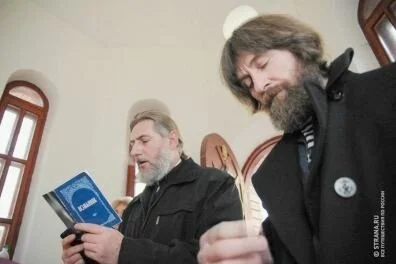 Tsarevich Nikolai Alexandrovich (fifth from left) during the trip. Egypt. 1890. Source:
Tsarevich Nikolai Alexandrovich (fifth from left) during the trip. Egypt. 1890. Source:
St. Petersburg. The Cabinet of Curiosities. The doll "Geisha Omatsu". Photo by: kunstkamera.ru
In addition, from the journey the prince brought numerous exotic trophies and gifts, magnificent photographs. Especially there were a lot of Japanese rarities, since after the attempt of Nicholas, the family of the Emperor Meiji and ordinary Japanese citizens were literally showered with "excusable" gifts. Some of the gifts were later kept in the Winter Palace and Anichkov Palace, part was transferred to the Kunstkamera. After the revolution, these things were forced to hide their "royal origin", and visitors to the Kunstkamera did not have the opportunity to see the most interesting – for example, a portrait of a geisha who attracted the attention of the last emperor. Only in 2010, the Oriental trip of Nicholas Alexandrovich inspired museum workers to the large exhibition "Panorama of Empires" in the Museum-Reserve "Tsaritsyno".
Nevertheless, for many years the entrance to the Kunstkamera was guarded by two expressive figures – the Ceylon demon-keeper and the Vietnamese god of hunting with tusks, mountains and leopard skin. Few of the visitors imagined that the Vietnamese chimera came to Russia with the future and the last king.
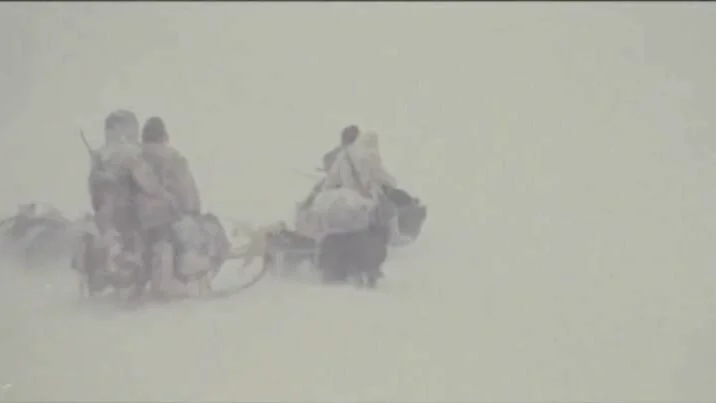
Fedor Konyukhov. Photo: Igor Stomakhin / Strana.ru
Fedor Konyukhov is our contemporary, but he seems to be either a "Renaissance man" or an alien from some other world without banal rules and boundaries. Unlike the vast majority of travelers, Konyukhov does not have "specialization": he went on a journey and sailing, and dog sledding, in climbing equipment and in a balloon. He visited both poles and all the highest peaks of the world, five times walked around the world, 17 times crossed the Atlantic Ocean, including one on a rowing boat. Not all of his expeditions were triumphant – Konyukhova, judging by the frequent headlines of the news, almost all rescue services in the world saved. Nevertheless, in our time he embodies an uncontrollable desire to move forward and rediscover the world.
Fedor Konyukhov. Photo: Igor Stomakhin / Strana.ru
Biography Konyukhov as a pest as his routes. He was born in Zaporozhye, studied at the carver-restorer in Bobruisk, in Odessa graduated from the nautical school, in Leningrad – the Arctic School and the Theological Academy. In 2010, the famous traveler was ordained priestly priest of the Ukrainian Orthodox Church (MP). This is not a sudden conversion, but a family tradition: the priests were the grandfather Konyukhov and the brother of the grandfather, canonized as the new martyr Nikolai Konyukhov. Fyodor Filippovich repeatedly told that at critical moments he was praying to Nicholas the Wonderworker and healer Panteleimon. The best place on earth is called the Trinity-Sergius Lavra.
This year Konyukhov has two grandiose projects: a round-the-world trip on a rowing boat through the three legendary capes of the Southern Hemisphere – Cape Horn, Cape of Good Hope, Cape Luin and flight into the stratosphere. Specially designed hermetic capsule of the thermal balloon "Russia" should raise the indefatigable father of Fyodor by 25 thousand meters.
Fedor Konyukhov during testing of a capsule of a thermal balloon. A photo:
Fedor Konyukhov is always on the road, but "localize" if not himself, then his multi-faceted worldview can be in Moscow, in his expeditionary headquarters. This is almost the center of the capital, Sadovnicheskaya street, 77. In the courtyard of the usual Moscow house, in a very small space, there are the museum-workshop of Konyukhov, the chapel of St. Nicholas the Wonderworker and the chapel of St. Fedor Ushakov, the museum of anchors in the open air, many monuments and commemorative plaques in honor of people close to Konyukhov in spirit – from Admiral Nakhimov to Nikolai Gumilev. In the workshop there is a boat "Turgoyak", on which Konyukhov alone crossed the Pacific Ocean. A place in a good way is insane – as if you get into the dream of a great traveler.


